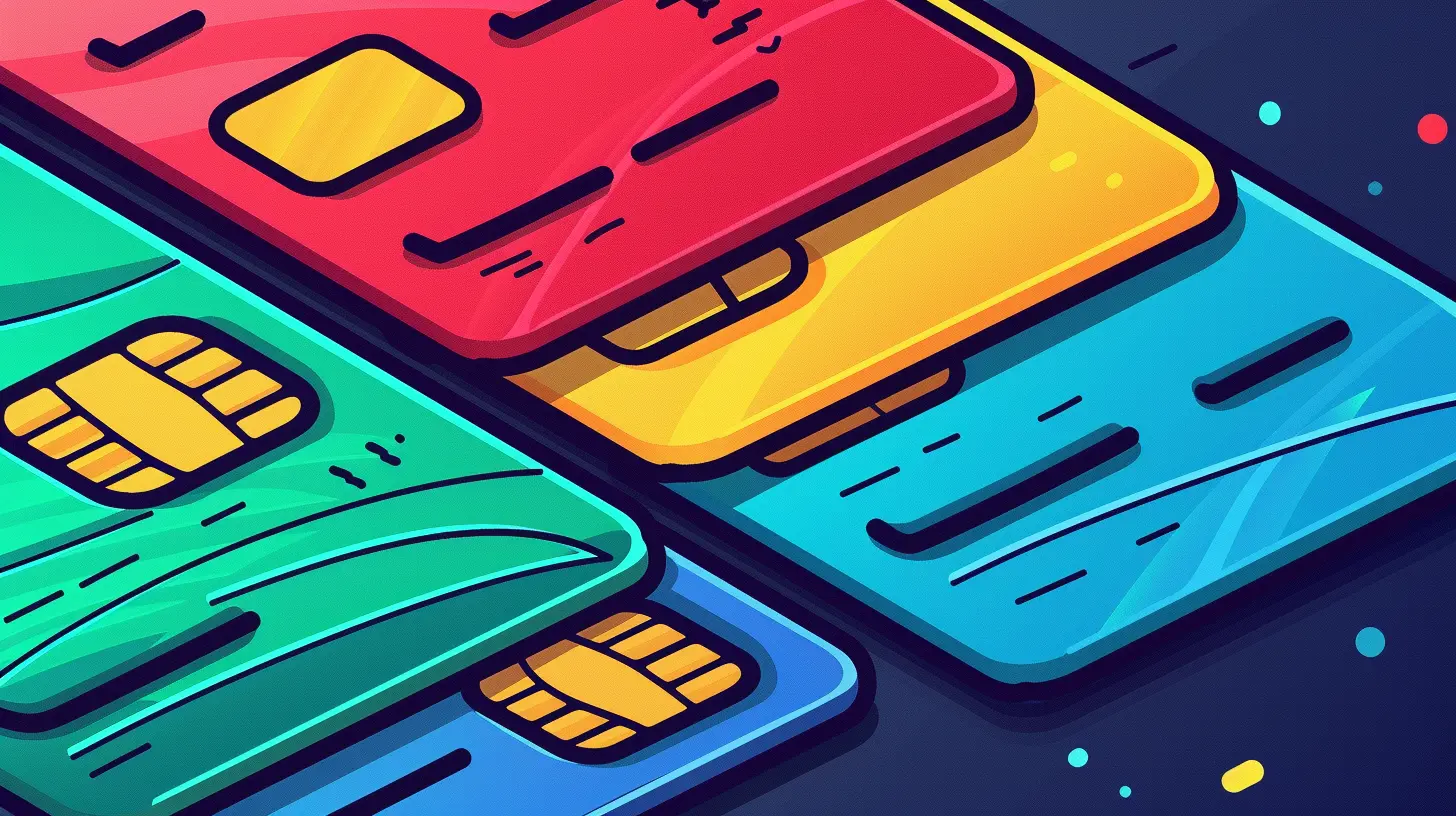Best Practices for Reducing Credit Card Balances Effectively
16 June 2025
Let’s be honest—credit cards can feel like both a blessing and a curse, right? One swipe at a time, it’s easy to rack up balances that seem unstoppable. But here’s some good news: you’re not stuck. You just need a game plan.
In this article, I’m going to walk you through the best practices for reducing credit card balances effectively—without boring you with financial jargon or judgmental finger pointing. Whether you’re tired of monthly minimum payments or just want more financial freedom (yay for stress-free living!), you’re in the right place.
Why Credit Card Balances Can Spiral Out of Control
Before we dive into the "how," it helps to understand the "why." Why do so many people find themselves in credit card debt in the first place?Well, life happens. Maybe it was an emergency expense, a job loss, or simply overspending. With high interest rates and sneaky compounding, what seemed like a small balance quickly turns into a big financial headache.
The good news? Every financial mess has a fix. And you don’t need to be a money expert to start cleaning things up.
1. Get Real About Your Numbers
First things first—face the music.Take a deep breath, pull out those credit card statements, and list every single balance, interest rate (APR), and minimum payment. This might sting a little, but trust me, you can’t fix what you don’t measure.
Use a simple spreadsheet or budgeting app to lay it all out. You’ll start to see where your money’s going and, more importantly, where you can take control.
Pro Tip: Focus on cards with high interest first—they’re silently draining your wallet every month.
2. Choose Your Payoff Strategy: Avalanche vs. Snowball
Now that you’ve mapped out the debt battlefield, it’s time to pick your weapon.Avalanche Method
This one’s the math whiz’s dream. You tackle the debt with the highest interest rate first, while making minimum payments on the rest. It saves you more money in the long run.Snowball Method
This technique is all about small wins. You pay off the smallest balance first, then roll that payment into the next smallest, building momentum (just like a snowball rolling downhill).Which one’s better? That depends on you. If motivation is your Achilles' heel, go with the snowball. If you want to minimize interest, avalanche is your guy.
Remember: The “best method” is the one you’ll actually stick to.
3. Stop Adding to the Fire 🔥
This is where it gets a little uncomfortable, but hear me out.If you’re trying to pay off credit card balances and you’re still using those cards for new purchases—well, you’re running on a treadmill. No matter how fast you go, you won’t get ahead.
Action Step: Freeze your cards—literally, if you have to! Delete saved payment methods from your phone and online stores. Build a habit of using cash or a debit card for purchases while you’re in repayment mode.
4. Build a Bare-Bones Budget (Just for a While)
I know, budgeting sounds as exciting as watching paint dry. But budgeting isn’t about restriction—it’s about regaining control.For now, create a bare-bones budget. Focus on needs, not wants. Cut streaming services, pause takeout, skip the impulse buys.
Every dollar you free up is a soldier marching toward your debt freedom.
This isn’t forever—it’s a short-term sacrifice for long-term peace of mind. And once you start watching your balances drop, budgeting won’t feel like a punishment…it’ll feel like progress.
5. Set Up Automatic Payments (And Pay More Than the Minimum)
Minimum payments are the credit card companies’ favorite trick. It looks helpful, but it keeps you in debt for years.Paying the minimum is like trying to drain a pool with a straw. You end up paying way more in interest, and it takes forever.
Set up automatic payments for at least a few dollars more than the minimum. Then increase that amount whenever you have extra income. Tax refund? Side hustle money? Birthday cash from Grandma? Toss it at that credit card.
Small extra payments add up faster than you think.
6. Negotiate Lower Interest Rates
Yes, you can actually call your credit card company and ask for a lower rate.I know—it sounds like a long shot. But customer retention is a big deal for these companies. If you’ve got a good payment history, they might lower your APR or offer a 0% promotional deal.
Sample pitch:
> “Hi, I’ve been a loyal customer for X years and I'm working hard to pay down my balance. I’d really appreciate any help you can provide with lowering my interest rate.”
What’s the worst they can say? No? Then you’re exactly where you started. But if they say yes, you’re winning.
7. Consider a Balance Transfer (With Caution)
A 0% balance transfer credit card can be a golden ticket—if you’re disciplined.These cards let you transfer high-interest debt onto a new card with 0% interest for a certain period (usually 12-18 months). That means your payments go entirely toward the balance, not interest.
But here’s the catch: if you don't pay off the balance before the promo period ends, you’re back to high interest. Plus, there’s usually a transfer fee (about 3-5%).
Use this method only if you have a repayment plan in place.
8. Tap Into Side Hustles or Extra Income
Let’s be real—sometimes budgeting and cutting back just don’t cut it.If you’re serious about blasting your credit card balances, consider earning extra income. That could mean:
- Driving for Uber or DoorDash
- Freelancing online (writing, graphic design, etc.)
- Selling stuff you don’t need on eBay or Facebook Marketplace
- Pet sitting, tutoring, or babysitting
Every extra dollar you earn is ammunition to attack your debt. Plus, side hustles can open doors to new skills, networks—and maybe even a career change.
9. Celebrate Wins (Even the Small Ones)
Paying off debt can feel like a marathon. That’s why celebrating small milestones matters.Paid off your first card? Treat yourself to a small reward (without using credit, of course!). Hit a new payoff goal? Share it with friends or a community online.
These tiny celebrations keep you motivated. Because your journey? It matters. And every step forward deserves recognition.
10. Stay the Course and Be Patient
Let’s not sugarcoat it—paying off credit card debt takes time. But it’s worth every ounce of effort.Some months will feel slow. Others will feel like a sprint. But if you stay consistent, you’ll wake up one day with…
- No credit card debt
- Lower stress
- More freedom
- And a future full of possibilities
It’s not just about money. It’s about mindset. Paying off your debt is proof that you can do hard things, stay committed, and change your life’s direction.
Final Thoughts: You’ve Got This 💪
Listen, debt can feel like a mountain. But every mountain is climbed one step at a time.The best part? You’re not climbing blind. You’ve now got a backpack full of strategies—from budgeting smarter to negotiating interest, using snowball tactics to side hustling your way to freedom.
So don’t wait for the “perfect time.” Start now. Start small. But start.
Because every dollar you pay today is one less weight on your shoulders tomorrow.
And believe me, nothing—and I mean nothing—feels as good as knowing you’re in charge of your money again.
all images in this post were generated using AI tools
Category:
Credit ScoreAuthor:

Eric McGuffey
Discussion
rate this article
2 comments
Reid Hughes
This article highlights crucial strategies for managing credit card debt, emphasizing the importance of prioritizing high-interest balances and utilizing the snowball method for psychological motivation. Additionally, it advocates for budget adjustments and automating payments to ensure consistency. Implementing these best practices can significantly enhance financial health and reduce stress related to debt management.
June 21, 2025 at 2:22 AM

Eric McGuffey
Thank you for your insightful comment! I’m glad you found the strategies effective for managing credit card debt. Prioritizing high-interest balances and automating payments can indeed lead to significant improvements in financial health.
Mistral Gill
Prioritize high-interest debts first for maximum savings and efficiency.
June 17, 2025 at 11:34 AM

Eric McGuffey
Absolutely, prioritizing high-interest debts is crucial; it minimizes overall interest paid and accelerates debt reduction.


